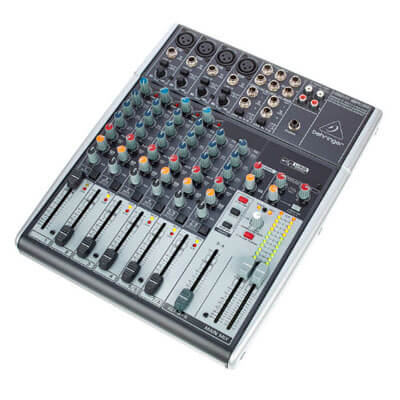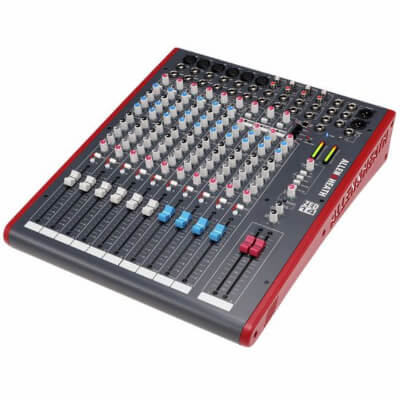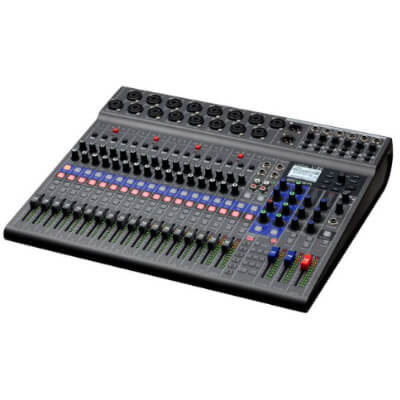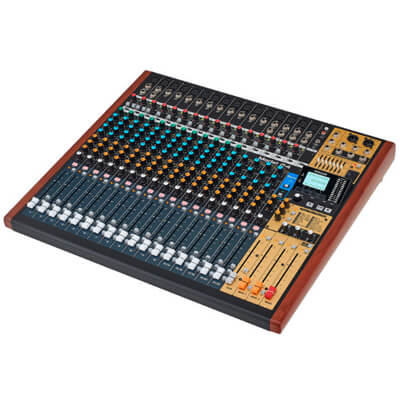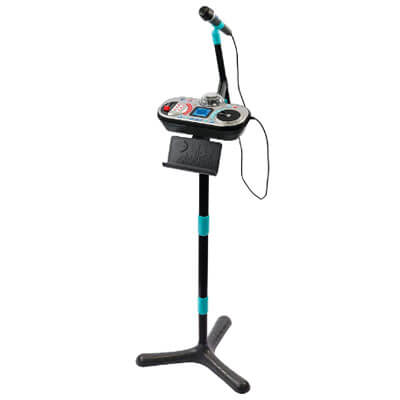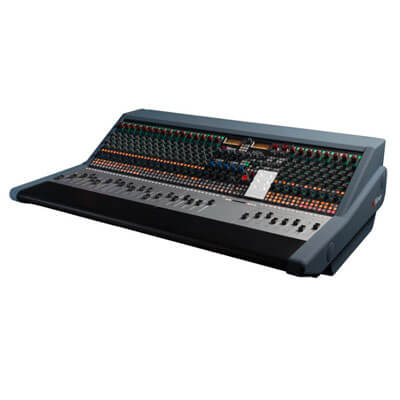Buying a digital mixer: My 6 best recommendations 2025
I have listed the best digital mixer for beginners, advanced users and kids. The most important information before buying can be found in the “frequently asked questions”.
This text has been translated into English. Please report spelling mistakes to sebastian@musiksocke.com
What kind of digital mixer are you looking for?
Frequently asked questions:
Digital mixer for beginners
Before buying a digital mixer desk, beginners should think carefully about the purposes for which they want to use the device and perhaps also set themselves a price range. There is a wide range of choices and configurations.
The most important criterion is the basic sound. Effects units, many channels and connections, as well as sometimes appealing light elements seem exciting at first glance, but sometimes deceive about the mediocre sound quality of the mixing desk. A good basic sound is the basis for all kinds of audio production from simple podcasts and voice recordings to multi-track music production. And if you later switch to an advanced digital mixer, the entry-level model still remains a good replacement or supplementary device.
In addition to the sound, handling and ease of use are also important in the beginning. Digital mixing desks with a classic channel strip (fader) offer the most precise way to level the signal, even if consoles with rotary controls are more compact and cheaper.
The Behringer Xenyx 1204USB is a good digital mixer to start with. It has 12 channels with equalisers and can also be used as a sound card/interface via USB. The mixer is well-made, even though many components are made of simple plastic. The price is correspondingly low. For the rehearsal room or the studio, it is sufficient for small bands.
The Allen & Heath ZED-14 is a comprehensive digital mixing desk that has all the necessary inputs and outputs to record a small band. Nevertheless, it is compact and can therefore be used equally well in the studio and on stage. Without having to make any major adjustments, the sound coming out of the digital mixer is already excellent. The fader is very good for this price range and can be finely adjusted. The effects are sufficient for beginners.
Digital mixer for advanced players
Here, too, the top priority is the basic sound of the digital mixer. This is being refined in more and more advanced models through the use of classic valves. Therefore, it is worth having a look at these models. In terms of price, you are already in a noticeably different league, which is why you should still be clear about what you want to use your digital mixer for.
Digital mixer for the studio
If you want a mixer for studio productions, you should primarily invest in good preamps and, ideally, valve technology. If you would like to record a drum kit, you should also have at least 8 microphone channels.
In the studio, effects are usually added separately in analogue or digitally within the respective recording software, which is why effects in the mixing console are not particularly important here.
Digital mixer for Live Concerts
If the digital mixer is to be used live, e.g. together with a PA, then an effects section makes sense. Effects such as reverb, vocal effects, chorus and delays can then be added proportionally to individual channels, which can enhance the overall auditory image of live events or concerts.
Normally, active loudspeakers are used for both studio and live applications, i.e. loudspeakers with their own power supply. If you want to use passive speakers, you need a power mixer that supplies the speakers with the necessary current.
When using a digital mixer live, it is also important to be able to monitor individual signals at any time, even apart from added effects. For this purpose, there are so-called busses or subgroups, which a live mixing console should definitely have.
Last but not least, one should consider that there is often little light in live situations. Many digital mixers therefore have USB ports to which you can connect USB reading lamps or similar.
All-rounder digital mixer for studio and live concerts
The Zoom LiveTrak L-20 is a digital mixer that performs excellently both in the studio and live. It has 20 channels, 6 configurable monitor outputs and can also be used as a USB interface. I find the controls clear and easy to use. Of course, the sound is important: it comes out of the digital mixer crystal clear and has extremely little background noise. In my opinion, the best sound in this price range.
The Tascam Model 24 has an extensive range of functions and can be used not only as a digital mixer, but also as an interface and recording station. It can process digital and analogue signals simultaneously. All knobs and faders are of high quality and have a pleasant resistance during use.
Digital mixer for kids
Even the most robust digital mixer is not a toy. However, if the children are interested in the subject, there are also suitable and inexpensive solutions.
Small karaoke machines are popular here, which often even have a fader and thus provide a playful introduction to how a mixing console works. In addition, there are mini-games, a microphone and an integrated music stand.
Digital mixer for crazy people
In the absolute high-end area, where the highest-quality productions are realised, high-quality and high-priced digital mixer technology is also used.
These consoles enable the mixing and mastering of music productions from four-piece rock bands to classical orchestras. The preamplifiers and components used are of superior quality and the mixers can be found in the largest and most expensive studios in the world. Numerous connection options and the integration of analogue equipment are standard. These mixers are pure studio devices and are not used live.
A prominent representative of this category is the AMS Neve 8424. It is the latest version of a true mixer legend at the price of a new car and is definitely only worthwhile in professional large-room studios.
How do I recognize a good digital mixer?
A good basic sound is the top priority. If possible, test the digital mixer yourself with headphones or speakers you know well. Many online shops offer a money-back guarantee so that the ordered product can be tested at home. It is also important to keep the noise floor as low as possible. Inexpensive mixing consoles in particular have to contend with significant background noise, making clean recording difficult.
Price does not always tell the whole story about quality, but those who invest their money in valve technology will not be disappointed if they have a preference for a warm and lively sound. Modern digital mixers combine the advantages of the analogue world with current digital possibilities.
The effects should come from an experienced and renowned manufacturer; mixing console manufacturers do not usually build these themselves. It is worthwhile to read more about the effects. All common mixing consoles have built-in effects, but their quality varies considerably.
Haptics and robustness are also important. The mixer must feel high-quality and all buttons and sliders must be easy to operate. With the right pressure point and a little resistance on the faders, operation is immediately more fun. It is also important to have a good stand for the unit. A good digital mixing desk is heavy and should not be allowed to slip when a slider is pulled. Besides, with the high prices, you don’t want to drop a unit.
What accessories do I need?
Depending on what is to be recorded, you need microphones, instruments, amplifiers, cables and possibly adapters. For a digital mixer, high-quality cables are crucial, which is why I’ll talk about cables in particular here.
The most common cable for a digital mixer is an XLR cable. There are many variants with different lengths. A common case in the studio or on stage is to connect the microphone to the mixer. This usually requires an XLR 3-pin cable. When it comes to cables, I always recommend the products from the sssnake. They are of high quality and the price-performance ratio is right. This is also the case with the sssnake SM6BK micro cable. With a length of 6 metres, the cable should be suitable for many situations.
The 6.3 mm jack cable is needed just as often. For example, when a music instrument such as the guitar or bass is to be connected to the digital mixer. Here, too, I recommend a cable from the sssnake. The sssnake IPP1060 jack cable fulfils its purpose and is sufficiently long at 6 metres.
What are the best brands for digital mixer?
I created this list in cooperation with experienced producers and musicians. It was important to us that only brands that have brought high-quality products to the market over many years are included.
How much does a good digital mixer cost?
A good digital mixer costs between 500 and 2,000 euros. For beginners, there are already good models in the range between 150 and 500 euros. The difference lies mainly in the range of functions and the number of connections. If you want to record a whole band, you should invest your money directly in a good digital mixing desk.
My recommendation for a good digital mixer.
What is the best digital mixer for beginners?
The Behringer Xenyx 1204USB for approx. 190 euros is a suitable digital mixer for beginners. It has a high-quality finish and offers enough settings for 2 to 3 devices. Many appreciate the compact format of this solid mixer.
The Zoom LiveTrak L-20 for approx. 1,000 Euros is suitable as a digital mixing desk for advanced users. There is hardly any other model in this price range that has such a wide range of functions. Nevertheless, it is clearly arranged and easy to operate. In my opinion, it is recommendable for bands that need many channels.
Here are more details on the digital mixer for beginners.
⚠️
* For the links marked with a star, we receive a commission on a purchase. The price does not change for you. Please use our link and support the independent work of Musiksocke. Thank you very much!
✔️
The product recommendations made here are based on my experience and conversations with expert musicians. All products presented here meet the criteria of the checklist.
🏦
All prices are incl. VAT plus shipping costs. The amount was estimated by me and may differ from the actual price. As an Amazon partner, I earn on qualified sales. This also applies to Thomann, Kirstein and all other partners.
String instruments:
Wind instruments:
Key instruments:
Drums:
Recording:


